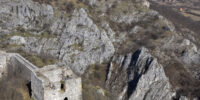The Insitute of Archaeology was founded on the 31st of May, 1947, in Belgrade. Its primary goal was to gather the foremost experts in various fields of archaeology within a single scientific institution, which would help to organize archaeological work in Serbia as efficiently and systematically as possible. Initially located in the residence of Princess Ljubica, it moved to the building of the Academy of Sciences (Kneza Mihaila 35) in 1952, where it remains today. Since 1961, the Institute has been an independent scientific institution.
From its inception to the present day, the work of the Institute has involved systematic field surveys and mapping of archaeological sites, as well as the organization and coordination of numerous archaeological excavations, both large and small in scale, of protective or systematic nature, always in collaboration with other institutions. The most significant undertakings of the Institute of Archaeology include organizing archaeological work during the construction of the hydroelectric power plants Đerdap 1 (1964-1971) and Đerdap 2 (1980-1984), as well as research at some of the most significant sites in Serbia, such as Sirmium, Viminacium, Felix Romuliana, Iustiniana Prima, Belgrade Fortress, and others. Throughout its existence, the Institute of Archaeology has collaborated with numerous institutions worldwide, often despite the geopolitical situation in the region and the world, nurturing relationships with numerous colleagues from abroad.
The results of the scientific work, both of permanent and external associates of the Institute, have been regularly published in numerous permanent, periodicals (Sirmium, Singidunum, Caričin Grad, Viminacium), or special scientific publications dedicated to various issues. Here, the journal Starinar stands out, which has been published by the Institute since its re-establishment in 1950 (fourth series). Without interruption, over 70 editions have been released to date with over a thousand scientific studies published. A special pride of all the institute’s employee is the library, which, from its humble beginnings with only 174 inventory numbers in 1949, has grown to 45,000 inventory units today, making it one of the most significant archaeological libraries in the country.




